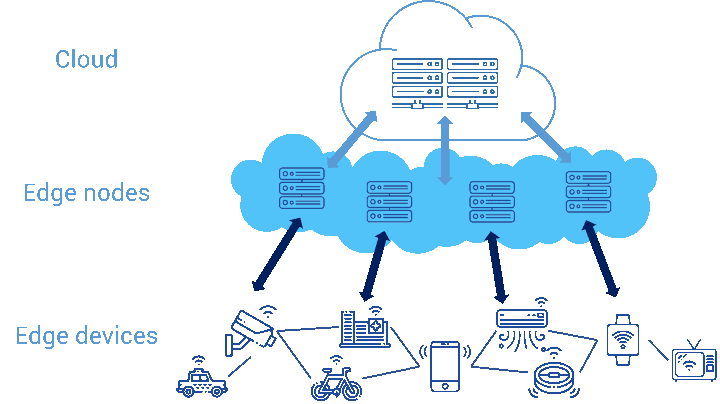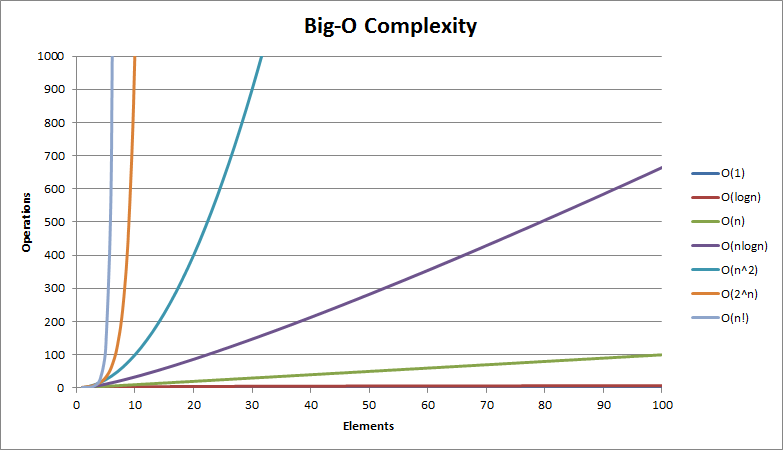With the ever-increasing growth of the Internet, it is obvious that all services are being put under immense pressure. Email servers, social networks, file sharing servers and other vital services are seeing fast increasing and voluminous traffic everyday. Based on how a system responds to increasing usage, they are classified as fragile, robust and anti-fragile systems. Here is what you need to know about them.
Author: Harikrishna Natrajan
What is edge computing?
How do we define edge computing? Picture yourself as the chef of a big restaurant in your city. You have hired 16 junior chefs. But they are new to restaurant cooking and are so low on confidence. For each step in each recipe, they run to you for approval. One junior chef comes to you with a spoonful of soup every time he adds some spice to verify if it still tastes right. Another chef rushes to you every time she adds some sugar to cake batter. Not only are you overworked as 16 chefs rush to you all day for validation, but the chefs themselves have run themselves ragged between their counters and your counter.
What if instead you told them, “I have faith in all of you. I hired you because you are all good learners with promise of greatness. I provide you complete autonomy in your day-to-day cooking. I will provide you with the recipes. But while cooking, you be the judge of the taste, texture and temperature. You don’t need my validation for every step. Come to me only if a customer complains about a dish. I will then intervene and take care of the customer. And help you improve.”
You have just established the groundwork for edge computing within your restaurant, where each junior chef uses his / her own expertise to complete a dish. You will just oversee their learning and guide them when they go wrong.
Remote work: Tools and best practices
I am writing this post during the COVID-19 lockdown. Companies have found ways to enable employees to work from home. While 100% remote work does not work for manufacturing industry, there is no problem with full blown remote work for soft service industries like information technology, digital content production (text, audio, video), live online coaching and customer care.
That said, my work life has seen no alteration during the lockdown. Why? I have been a software freelancer since August 2015. I have been choosing to work with clients who don’t ask me to come to their premises. Very few clients ever mandated that I work from their office. They cared more about getting work done than seeing me in person 🙂 . So COVID-19 or not, I have an experience of five years in remote work. Which means I have a lot of guidance to offer you.
How to make video tutorials for ZERO cost
Whether you are making a course on Udemy, like I do (my Udemy courses), or helping your grandma learn how to use her new microwave oven, making a video tutorial with a voice over is extremely useful. Whether you are a software engineer, a businessman or a chef, a video tutorial can go a long way in making things clearer for your audience, rather than a voice-only tutorial or a blog post. In my opinion, learning how to make video tutorials should be considered as important as learning how to work on a spreadsheet or learning how to program.
Here is my way of making good video tutorials which may not be of the highest professional quality, but so effective that your audience will love it. And I have ratings for my course as a proof that your audience indeed will love it 🙂
Continue reading “How to make video tutorials for ZERO cost”
Beware of 100% Agile
The Agile method of software development took the software world by storm in early 2000s. It has continued to grow significantly in the last two decades. So much has it grown that its predecessor, the waterfall model, is now seen as an outdated Jurassic method of approaching software. Very few companies still stick to the waterfall model. And those companies are considered luddites!
But is the Agile method as good as the hype surrounding it is? Or is it just another management fad that software engineers are tolerating in silence to keep their jobs? Turns out that Agile is superior to waterfall model on several counts. But a 100% move of each and every process in a company from the so-called outdated methods to the nimble Agile methods can do more harm than good. How? Read more to find out.
Is my algorithm gobbling space?: Understanding space complexity
In post about time complexity last fortnight, we saw how we can choose the fastest among multiple algorithms by evaluating their time complexities. Sometimes speed may not be our concern, but rather conserving space inside a tiny device. So we may opt for an algorithm that takes up less space while executing. The space taken up by an algorithm is also called its footprint. Let’s understand how to use space complexity to determine how much footprint an algorithm will take.
Continue reading “Is my algorithm gobbling space?: Understanding space complexity”
How long will my algorithm take?: Understanding time complexity
A software application is a combination of algorithms working together to do tasks for you. But how can we determine which algorithm to use for a specific problem? One way to choose is by evaluating the time that an algorithm will take to solve a problem and how much memory it will consume. To objectively measure the two quantities, we have two methods called time complexity and space complexity respectively. In this post, we will look at time complexity to determine if our algorithm is fast or slow.
Continue reading “How long will my algorithm take?: Understanding time complexity”
Machine Learning: A primer
In my 100th Tech 101 blog post, I am writing about a topic that I am yet to cover — Machine Learning. With the field now fairly mature and plenty of programming languages and companies supporting it with excellent software, it is high time for me to educate my readers on what exactly machine learning is.
In layman language, machine learning is a branch of artificial intelligence. Machine learning uses statistical methods, a branch of mathematics. It enables a computer to recognise patterns from data. Using machine learning, a computer make predictions from data, based on previous data that it has already learnt from. Let’s learn more. Continue reading “Machine Learning: A primer”
There is a container for that!
Let’s imagine that you liked a bicycle at a sports shop and ordered one to be shipped to your home. How would you like it if the shop shipped everything seperately? The frame is in one box, while the wheels are in another. The gears and chain are a tangle, while the handlebar is just a stick with two rubber ends. The seat is a disembodied piece of cushion. Would you be happy with the sports shop and buy from them ever again? No, you’d love it if they ship it completely assembled. You want them to deliver it to you so that you are ready to go. The only fixing you would want to do is some tuning to the brakes and some adjustment to the seat height.
So why should software be any different? Why is it that when we install something, we should have to take care of installing the dependencies, hoping that they don’t clash with those of other applications? One app requires .NET run time version 4, but a new one you are about to install requires .NET run time 5. An app on Linux requires ImageMagick library, so now you have to go find it and install it first. To install Mac OS applications with dependencies, you need to learn about the entire ‘brew’ system.
What if someone simply ships an entire working app with all its dependencies as part of a ‘box’. Just like your bicycle, where the sports shop takes care of assembling the wheels, handlebar, gears, chain and the seat to the frame. That is the concept of containerised apps, these days made popular by Docker. Continue reading “There is a container for that!”
When devices whisper to each other – Part 4: Near Field Communication (NFC)
So far, we have talked about short distance communication methods where a fairly powerful radio transmitter is used to communicate with devices within a room or in the next room. Today, we will see a method which is effective only when the devices are within millimetres or at most centimetres of each other? Why would you need communication over such an ultra-short distance at all? Let’s find out. Continue reading “When devices whisper to each other – Part 4: Near Field Communication (NFC)”









